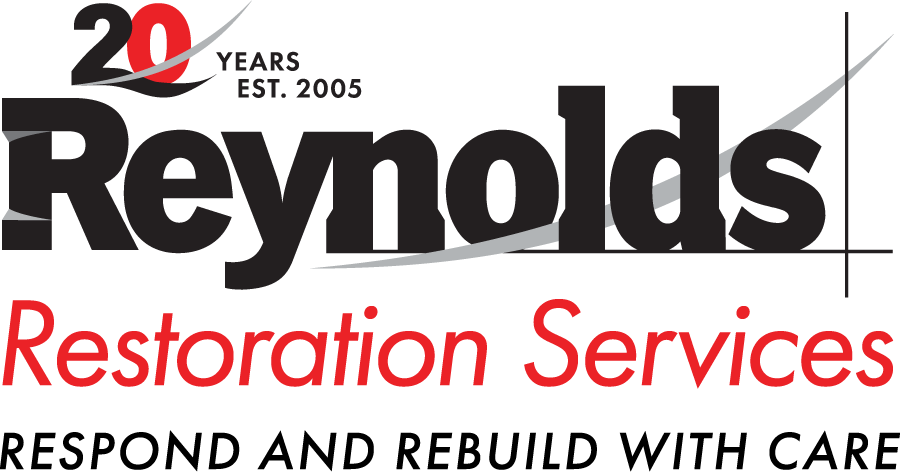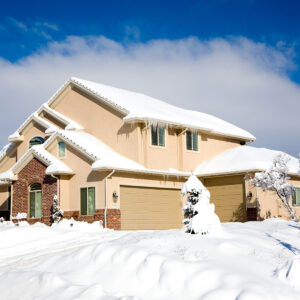When people think of floods, they think of rivers flooding in early spring or tropical storms pouring inches of rain in the summertime. The truth is flooding is a year-round risk, especially with melting snow. In the mid-Atlantic, we are no strangers to heavy snowfall, and when it rapidly melts with rising temperatures, it can cause flooding.
As little as 6 inches of melting snow can produce an inch of water that can quickly seep into homes and offices. Without proper preventative measures, snowmelt flooding can cause thousands of dollars in damages, interrupt business operations, or displace families.
As we head into the winter season, let’s take a look at ways to prepare for snowmelt, what to do once the snow starts falling, and steps to take if your home or office starts to flood during a snowmelt.
Preseason Snowmelt Flooding Prevention
The best way to stay ahead of winter flooding is to take steps now to prevent water from entering your home or business when the snow melts. To protect your property from flooding, take a day or two to inspect these areas around your building and take preventative measures before the snow and ice arrive in the middle of winter:
- Check drainage around the house or office building: Check the window wells, gutters, and exterior walls to make sure they are clear of debris. Remove leaves and other items and make sure the landscaping slopes away from the structure. Clean out the gutters to prevent ice dams from forming.
- Install a sewer backup valve. During massive snowstorms, town and city sewer systems can become overwhelmed and flood. This can cause a raw sewage backup and can be a nightmare for home and business owners. Installing a sewer backup valve can minimize the risk of black water flooding.
- Sump pump: A sump pump, like a sewer backup valve, is a piece of equipment that can help prevent flooding. A sump pump works by moving water from the basement out of your home. The submersible device is placed into a sump pit that is carved into the lowest point of your home, usually the basement floor.
- Inspect basement walls: The basement is the most likely area of a home or office building to flood. Check the basement floors and foundation for any cracks that could allow flood waters to enter. Look for evidence of former small water leaks and repair the areas before the snowfall.
Putting in a little effort prior to the snow season can prevent winter flooding and water damage. But you shouldn’t stop there. Once the snow begins to fall, there are additional steps you can take to keep your home or office dry once the snow begins to melt.
Snowmelt Flooding Prevention After the Snow Falls
In general, snow produces approximately one-tenth of its volume in water, or one inch of water for every 10 inches of snow. In Pennsylvania and Maryland, we often see snowfalls greater than 10 inches, with record-breaking storms bringing two or three feet of snow! When a snowstorm starts in our region, here are some steps to take to keep flooding from affecting your building:
- Clear snow from around the building. The reason that many homes or offices flood after a winter melt is because the snow was piled up immediately adjacent to the building. Use a shovel to remove the snow from the perimeter of the house, about 1-2 feet wide. Clear the snow from around the gutters as well, paying attention to any debris that may prevent water from moving away from the building.
- Dig out window wells. When moving the snow away from the perimeter of the building, don’t forget the window wells and exterior stairwells. Snow can get trapped in these areas and once the temperatures begin to rise, it will quickly melt. Use a shovel to move the snow away from the house.
- Clear snow from the roof. Not only does clearing snow from the roof prevent ice dams, it moves potentially high volumes of water away from the house. Roof rakes are designed to tackle this task for you and will not damage your roof like a regular garden rake. It’s easiest to remove snow from the roof soon after it falls. Once it gets packed down, the weight can make it hard to remove. Snow rakes cost between $50-$100 and are typically available at your local hardware store.
Sometimes preventive measures may not fully protect your home from a winter flood, especially during a blizzard or severe winter storm. If your basement begins to flood, there are steps to take to minimize water damage.
Learn About Our water Damage Restoration Services
Winter Flood Cleanup
If your home or office begins to flood during the winter, it’s important to take quick action to minimize damages and reduce any out-of-pocket expenses not covered by home insurance or commercial flood insurance. Remember – the longer the moisture remains in the building, the harder it will be to restore the property.
Here are a few steps to take after a winter flood:
- Mitigate mold development: While many people assume mold is only an issue during the hot, humid summer months, mold can grow any time of year, even in the winter. Keep your indoor air cold and dry to avoid mold and mildew growth. Remove wet items from the affected area as soon as possible.
- Identify water source: Try to find the area of your home where the water is entering. The water may be coming in through a window or a crack in the foundation. Dam the area while you try to move water away from the home. Examine the exterior to see where there is standing water and create an easement for the water to flow away from the building.
- Begin dry out: For small or mid-size floods, you may be able to dry out your flooded area on your own. Even if it’s cold outside, open the windows in the affected area to allow for fresh air and sunlight to help reduce moisture. Use a dehumidifier if it’s safe to do so and use fans to assist in air movement.
Sometimes winter flooding can be extreme and requires a professional restoration company for clean up and water damage repair. A reputable water damage restoration company has the tools, expertise, and training to get your home or business back to its pre-loss condition efficiently.
Reynolds Restoration Services for Winter Floods
While we hope you don’t need our services this winter, Reynolds Restoration Services is on-call 24/7 to respond to flood emergencies in the Harrisburg, PA, Philadelphia, PA, and Baltimore/DC metro regions. Our team of trained emergency service professionals can be on-site quickly for water removal, dry out, mold mitigation, and reconstruction.
We have been helping home and business owners for more than 15 years with their emergency restoration needs. We are trained in water, fire, storm, mold, and content cleaning services. Don’t let the stress of a flood fall on your shoulders – let us work with your insurance company to get you back into your home or office quickly.

President of Reynolds Restoration Services. Over 20 years of experience in the emergency restoration industry.


